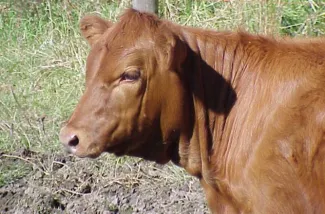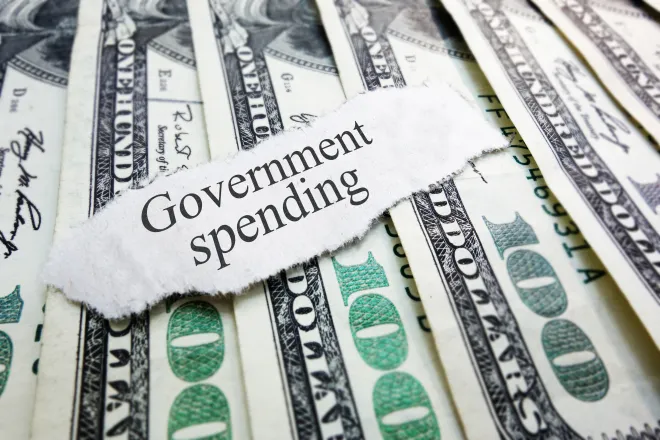
Pennsylvania chocolate surplus finds new use on farms
© Smederevac - iStock-1470677566
Click play to listen to an abbreviated version of this article.
American consumers spend roughly $11.6 billion on candy each Halloween, but even at that rate, candy companies end up with a surplus. Those leftovers end up in some interesting places, including farms, where some farmers end up feeding candy to their animals. Chocolate and other treats that can’t be sold, or candy bits leftover from production, are being sold to some meat and dairy producers to add to their animal feed. While the practice has been going on for years, more recently, the agriculture and candy industries have been framing the practice as “sustainable” — a way to curb waste that would otherwise go to landfills. Major meat producer Cargill, for example, deems it “upcycling” and a “win-win” for the animals and the environment.
A deeper dive reveals that both meat and candy companies also benefit financially from feeding candy waste to farm animals. And some food waste experts say consumers should be questioning why there is so much of this waste to begin with.
Where the Practice Originated, and Whether It’s Healthy
Feeding candy to farm animals was initially motivated by rising corn prices during times of drought, making the practice a way for producers to reduce feed cost. Candy can apparently fill in for corn as a required sugar source. As one former cattle nutritionist turned dairy farmer, Laura Daniels, claims via social media, sugar is needed to feed bacteria in the stomach of cattle that breaks down the fiber in plant foods they consume.
However, at least one farmer doesn’t see the benefit. “Empty, nutritionally void, chemical laden sugars are being foisted on cattle and their rumens,” writes Minnesota farmer Lauren Kiesz,“all in the name of the conventional food system’s four horsemen: bigger, fatter, faster, cheaper.” Kiesz, who says she farms animals exclusively on pasture, notes, “a mouthful of grass and a mouthful of Mounds are extraordinarily different.”

Wikimedia - Public Domain
The debate doesn’t end there. While some advocacy groups for pigs kept as pets urge owners not to feed candy to their animals, there are hog farmers who also add candy waste to their feed.
And it continues. “Candy of all forms is unhealthy for pigs,” says the North America Pet Pig Association. Yet, according to National Hog Farmer, “Waste chocolate can also be added up to 30 percent of finishing pig diets to support optimal growth performance without affecting carcass composition or pork quality.”
Feed is the greatest expense for most animal farmers, so cheap candy waste offers an economical solution. “When producers find a way to blend in other, cheaper ingredients into the standard cow meal, they frequently will,” reports The Counter. “As long as the stuff doesn’t hurt milk and meat output, they’re going to make more money.
Many consumers learned of the practice of feeding candy to cows in 2017, when a truckload of red Skittles spilled onto a highway in Dodge County, Wisconsin. The story went viral, making news across the country. Those particular candies were reportedly defective, lacking the signature “S” due to a power outage at the factory. Interestingly, while the truck was reportedly on its way to a nearby dairy farm, Mars (the owner of Skittles) later denied that it had sold the candy to be fed to cattle.
Questioning Candy Waste
The Hershey Company has been selling candy waste to Cargill since 2011; which the chocolate maker describes as an “innovative” “sustainability partnership.”
“Today we have an entire plant in Chambersburg, Pennsylvania (U.S.), dedicated to this environmentally, economically, nutritionally friendly effort,” states Cargill on its site. “There, our team turns tens of thousands of pounds of Hershey’s chocolate waste per year into feed ingredients for cows, pigs and other species of livestock.”

As the farmer Kiesz notes, though, claiming that feeding castoff candy to cows is a net positive to the environment, is, “on closer inspection […] completely misleading.” She explains that with all steps considered, “middle-men, inputs, and expended resources” — including the added transport of the candy — “there is no way anyone can make the argument that our environmental system is better off.”
Dr. Kathryn Bender, assistant professor of economics at the University of Delaware, seems to agree. Bender says that while “it’s always great to see these innovative solutions,” meaning the diverting of candy waste to livestock, “the most ideal thing would be if we just didn’t have that waste in the first place.”
She says that programs such as the one employed by Hershey and Cargill should be there to aid companies in measuring and subsequently cutting their waste. “Oftentimes, there’s just a lot of food waste that’s not measured, and so programs like this can allow companies to start tracking what that waste is, and then we would hope that companies would say, ‘Okay, what can we do to decrease that waste?’”
But that doesn’t seem to be happening. According to news reports, candy companies have been selling their waste to animal farmers for over a decade, at least. It turns out that having such a fallback may be quelling the motivation of a company to cut their waste, says Bender. A similar example of these perverse incentives played out in a study she worked on regarding consumer food waste that showed waste increased when consumers believed it was being composted rather than going to a landfill.
Inside the U.S. Corn Surplus
While both Hersey and Cargill tout the benefits of the partnership, Dr. Tammara Soma, associate professor and research director of the Food Systems Lab at Simon Fraser University, says consumers should be questioning why so much candy is being produced to begin with. The reason, she tells Sentient, “is because we’ve commodified corn,” and we have so much high fructose corn syrup being produced as a result.
As Soma explains, because corn is “produced in such excess and is highly subsidized in the U.S., high fructose corn syrup —- which became a cheap sweetener in lieu of sugar cane or beet sugar — got put into everything.” She says this is what spurred the production of many corn syrup based items, “like all of the candies we see for Halloween.”

Corn (and, for the record, this is dent corn not the sweet corn you eat off the cob) is considered the most valuable commodity in American agriculture, with the U.S. being the largest producer and consumer of corn in the world. Though dent corn, also called field corn, is grown mostly for feed for livestock and for ethanol, it also plays a massive role in processed food. “Corn is in the sodas Americans drink and the potato chips they snack on,” writes Roberto A. Ferdman for the Washington Post. “It’s in hamburgers and french fries, sauces and salad dressings, baked goods, breakfast cereals, virtually all poultry, and even most fish.” It’s also in candy.
Tom Philpott, a researcher at John Hopkins Center for a Livable Future, and former food and agriculture correspondent for Mother Jones and Grist, tells Sentient that the agri-food industry, “is just always looking for another profitable way to get rid of this overproduction of corn.” He adds that “someone’s going to find a use for that and a way to make a buck off of it. Selling high fructose corn syrup to the candy industry is just one way.” And because corn syrup is so cheap, he says there is little risk to candy companies to overproduce, especially when livestock farmers are there, ready to pay for it.
Hershey’s classic chocolate bar contains sugar — another product Soma explains is produced in surplus — but many of the brand’s other products, such as Twizzlers licorice, Almond Joys and York Peppermint Patties, contain corn syrup.
Soma says the commodification and surplus of corn and sugar results in waste, including “too many surplus candies, that are then fed to commodified animals.” Because animal farming has become so industrialized, she adds, “the large scale [of animals] can somewhat absorb the large scale of waste.” And on top of that, everyone gets paid.
Feeding candy to cows is not only done to curb waste and allow major corporations like Cargill to claim to be more sustainable. It also saves them money. Large companies like Hershey would otherwise likely have to pay private waste haulers, Soma explains, to either transport and dump the waste in landfills, or to be dealt with by anaerobic digesters that turn food waste into biogas. Instead, candy companies can charge meat and dairy producers to take the waste off their hands — producers who then save money thanks to the cheaper feed. They can also continue over-producing, rather than working to cut waste, while claiming to be sustainable.
Sentient reached out to Cargill for this story, but did not receive a reply.
The Bottom Line
Ultimately, Soma says that without the option of using commodified animals to absorb the surplus candy waste, “we would be able to question more why cows would ever need to eat highly processed candy derived foods,” as well as question why there is so much waste being produced to begin with, and be pushed to seek better solutions.
Overall, she says, “we need to critically question industrial agriculture and industrial commoditized food systems,” which she says are “very wasteful, very extractive, focused on profits alone at the expense of the environment, promotes monoculture and takes nature out of the equation.”
Jessica Scott-Reid wrote this article for Sentient.















